Story and visual influences on The X-Files : The Movies
Fight the Future [1998]
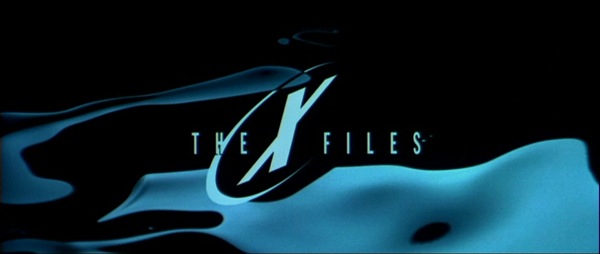
For inspirations for the X-Files, the X-Files mythology in general and for the Syndicate, inspirations that could also apply to this movie, see the following episodes:
- 1X79: Pilot (Mulder alone against all: “The Invaders”)
- 1X01: Deep Throat, 1X16: E.B.E., 1X23: The Erlenmeyer Flask (Mulder’s meetings with a secret informer: “All the President’s Men”, “JFK”)
- 3X01: The Blessing Way, 5X02: Redux (the Syndicate: “The Godfather”, “The Boys from Brazil”, “Three Days of the Condor”, “Quatermass II”, “The Parallax View”)
- 3X24: Talitha Cumi (alien colonization of Earth: “The Invaders”, “V”)
– Invasion of the Body Snatchers (Don Siegel, 1956)
Given the importance of that film on science fiction (see 8X08: Per Manum), it’s difficult not to think of it when we discover the rows full of pods with people gestating aliens inside the ship in the end of the X-Files movie. “Invasion” inserted the expression “pod people” in popular culture, referring to the replacement humans grown in alien pods and by extension any mindless drone or spooky fake human. In some way, the X-Files colonization involves “pod people” as well!
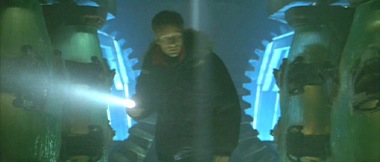 |
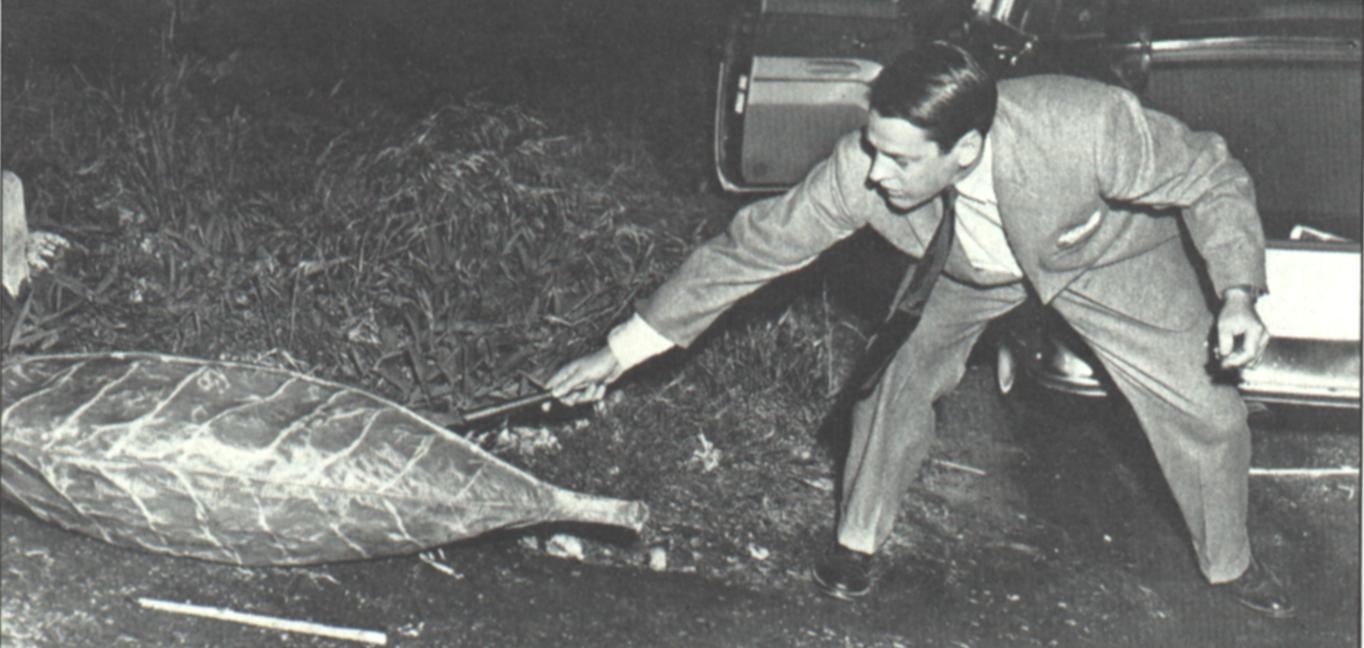 |
– North by Northwest (Alfred Hitchcock, 1959)
The chase scene with the black helicopters in the middle of corn fields in the X-Files could have been inspired by an iconic scene of cinema: the chase scene in this well-known Hitchcock movie. The protagonist (Cary Grant), caught in the middle of a spy conspiacy, is led by bus to an isolated crossroads in the middle of nowhere, where he expects to meet somebody; instead, a biplane that was up until then dusting pesticides turns towards him and starts shooting him; during the chase, he hides in nearby corn fields; the plane dusts the fields, forcing him out; eventually he escapes by stopping a truck. The setting (corn fields) and the manner of chase (flying machine of unidentified origin) are strikingly similar.
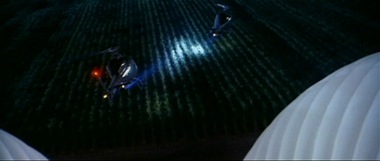  |
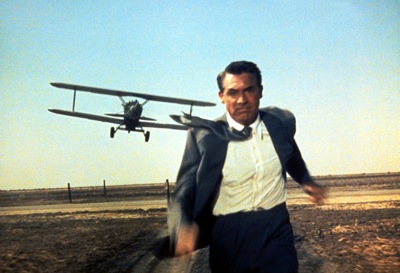 |
– Lawrence of Arabia (David Lean, 1962)
Rob Bowman, director, mentioned that he watched “Lawrence of Arabia” to get inspiration, given the epic scope of the movie as opposed to the smaller scale of the TV episodes. “Lawrence”, generally recognized as one of the best epic films, features many wide landscape shots of the desert, and its interweaving of personal stories, warfare and calmer moments in nature make it a reference in cinematographic terms. Its influence can be felt in the establishing shots of snowed landscapes (prologue in Texas, Mulder in Antarctica) or desert landscapes (Mulder and Scully’s car in the Texan open spaces, the helicopter over Tunisia). On the DVD commentary, he said:
“So we’re dissolving from the black of night, the dark interiors, the claustrophobic interior of the limousine to this vast white canvas of the Antarctic. This is really the influence that watching “Lawrence of Arabia” over and over during the course of filming had on me. Wanting to really utilize the width and scale of the movie screen for the X-Files and make it larger and on a grander scale than ever before.”
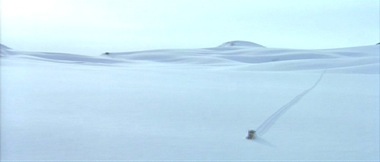 |
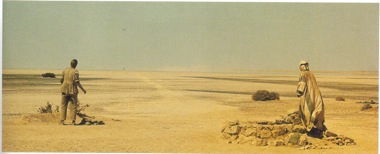 |
– All the President’s Men (Alan J. Pakula, 1976)
Rob Bowman also mentioned an influence from “All the President’s Men” in the set design. For the FBI Field Office in Dallas:
“We put the dividing walls, but to get that look, sort of reminiscent of “All the President’s Men”. In the office there with Dustin Hoffman and Robert Redford with all those florescent lights that go on forever. We built this little lab, with the little hot zone right in the center, with our own little light box above to stage around but it was all a big set nursing job.”
The look of the FBI offices, mostly confined to the background, is one of endless halls illuminated from above, giving the shots depth that they would otherwise lack.
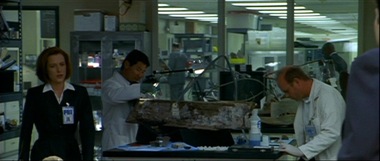 |
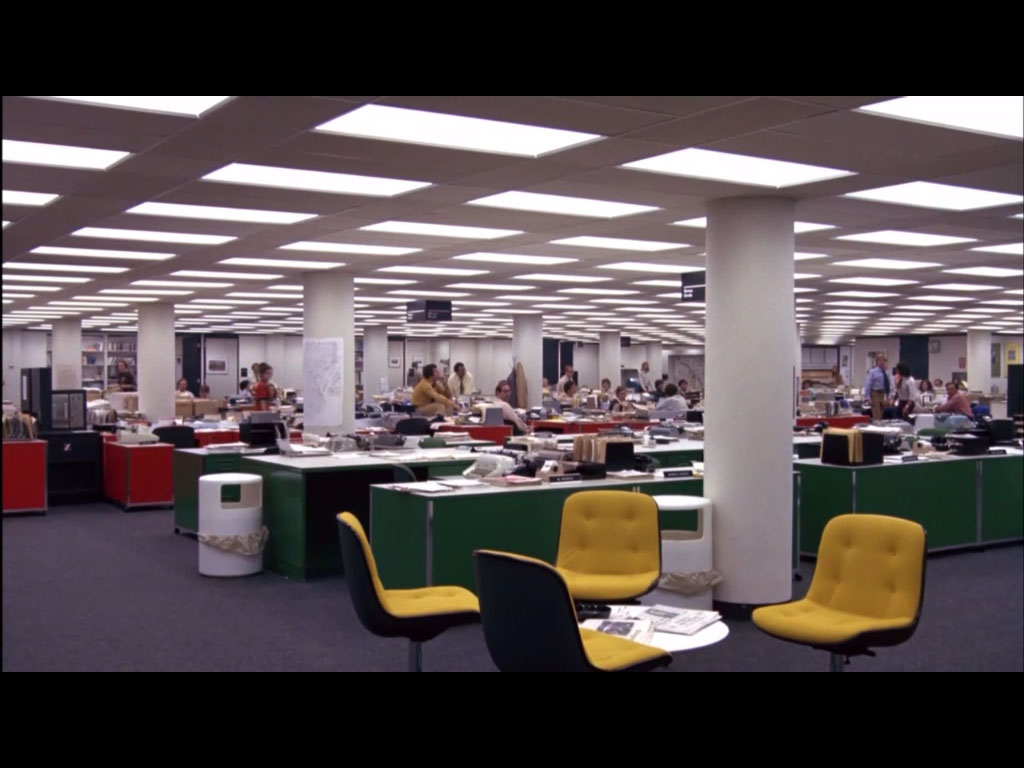 |
– Capricorn One (Peter Hyams, 1977)
Unmarked black helicopters have become a staple of conspiracy theories, same as the governmental men in black. Perhaps their first use in film media was in this movie, which deals with a fake human landing on Mars being presented as the real thing; the story was inspired by “true” conspiracy theories on the Apollo moon landings as being fake and the images being shot in a Hollywood studio (some say even directed by Stanley Kubrick himself as he had just wrapped “2001: A Space Odyssey”!). In the film, the crew of the would-be Martian lander escape and attempts to expose the cover-up, but they are chased in the desert by black helicopters.
 |
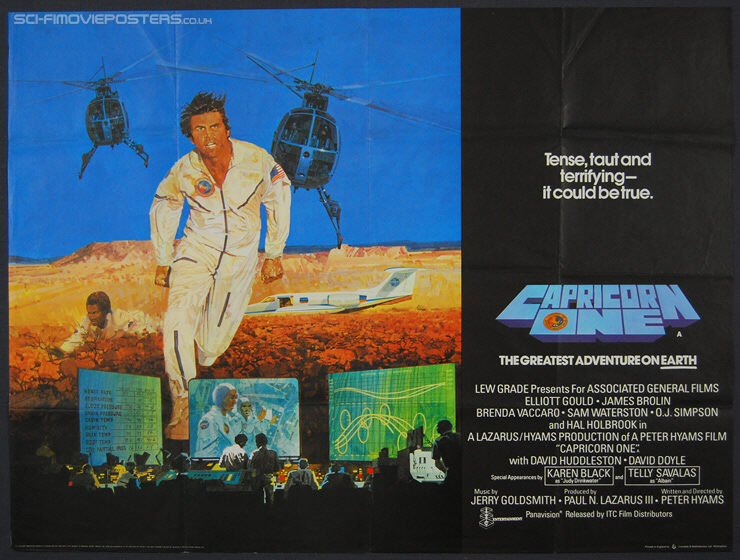 |
– Alien (Ridley Scott, 1979)
– Aliens (James Cameron, 1986)
The most obvious movie reference for Fight the Future and ultimately for the X-Files mythology overall is the “monster” alien and its life cycle introduced here, resembling that of the alien in the iconic franchise introduced in “Alien” and carried on in “Aliens”. In the movies, the alien reproduces in several complicated steps: a big egg shelters a “facehugger”; the facehugger exits the egg and wraps itself around the face of the future host and impregnates him through the mouth; the facehugger falls off while the alien embryo grows inside the host; the alien “chestbuster” violently breaks through the sternum, killing the host; the chestbuster grows quickly and sheds its skin before becoming the classic adult alien, a large monstruous creature with no eyes, a second mouth, a large tubular head, a humanoid body, six fingers, a scorpion tail.
The “Alien” franchise is too important and well-known to film audiences to ignore the similarities with the way the X-Files alien reproduces: gestation inside the body, hatching by breaking the chest cavity and killing the host, growing and sheding the skin, adult monstruous appearance. This direct lift from “Alien” is all the more disturbing and blatant since this is something as important as the X-Files theatrical film, it is explained as the way with which colonization will occur, and becomes the heart of the X-Files mythology!
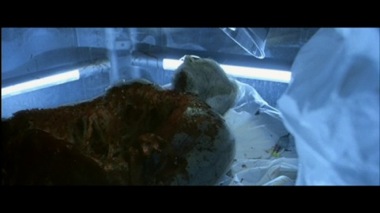 |
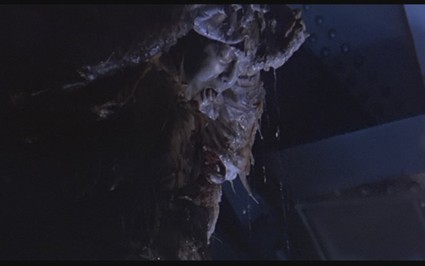 |
– At the Mountains of Madness (H.P. Lovecraft, 1931)
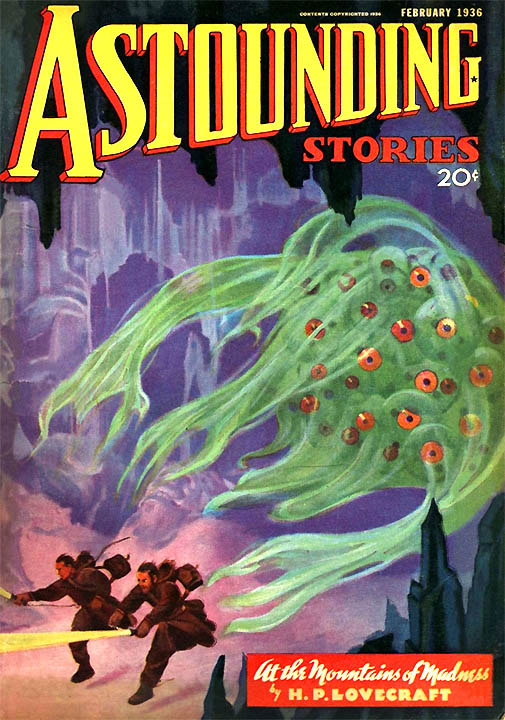
The ancestor of all books and films using Antarctica as the hiding place of an ancient and powerful alien civilization is this novella by the classic horror author. Lovecraft is of course known for his Cthulhu mythos, tales of exploration and mysterious discoveries that create horror at the mere ontological implications of there being enormous God-like ancient entities living on Earth for whom humanity is no more important than ants are to us. This novella is part of the overall Cthulhu and follows its themes: an expedition travels to Antarctica and discovers various mythical creatures, culminating in the discovery of an ancient immense city under the ice, built by the aliens identified as ‘Elder Things’; the expedition returns with barely two survivors, one of whom lost his sanity with what he saw.
– The Thing (John Carpenter, 1982)
The X-Files movie ends in Antarctica, with Mulder discovering the source of all the trouble in the rest of the film: an alien ship buried under the Antarctic ice; the ship leaves, leaving a huge crater behind it. The setting is similar as in “The Thing”, where the team of researchers discover that the source of their trouble came from an alien ship hidden inside a crater in the middle of the Antarctic ice.
 |
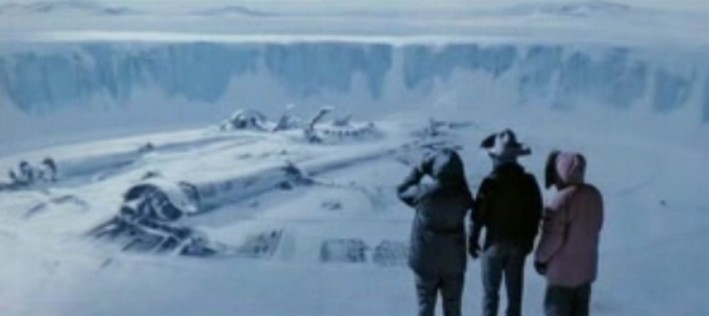 |
– JFK (Oliver Stone, 1991)
Similar to Mulder’s scenes with Deep Throat, Mulder’s scenes with Kurtzweil (Martin Landau) could have been inspired by the meetings between investigator Jim Garrisson (Kevin Costner) and his informant (Donald Sutherland) in “JFK”: fear of getting discovered, dialogue full of exhilaration for the secret information being passed on.
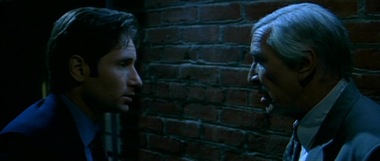 |
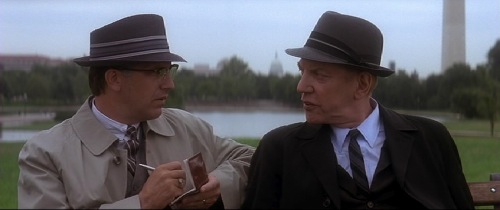 |
– Independence Day (Roland Emmerich, 1996)
Mulder famously takes a leak on an “Independence Day” poster in the back alley of a bar, which is a way for Carter to echo a reference on the X-Files in that movie. FTF director Rob Bowman said that Carter really didn’t like “Independence Day”, which could be understood given the very different tone of that movie (action, explosions, patriotic) and the X-Files (dark, low-key, conspiratorial). Both movies are about alien invasion of Earth of course — but moreover, both movies end with a human penetrating the inner sanctum of the alien presence, a big darkly lit ship with vast empty spaces, with the delivery of a contaminant to fight the aliens (a software “virus” in “Independence Day”, the biological vaccine for the X-Files), and with the adventurous escape of the humans as all hell breaks loose.
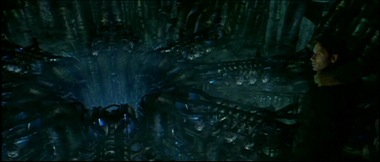 |
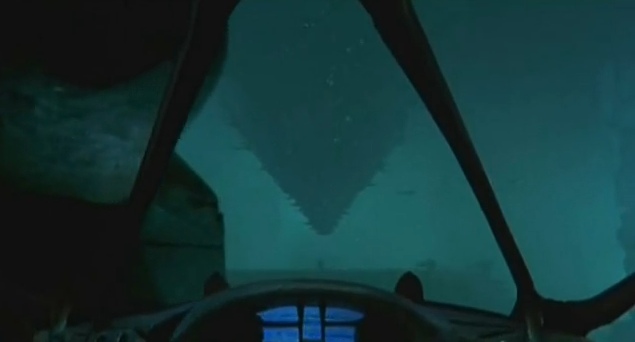 |
I Want To Believe [2008]
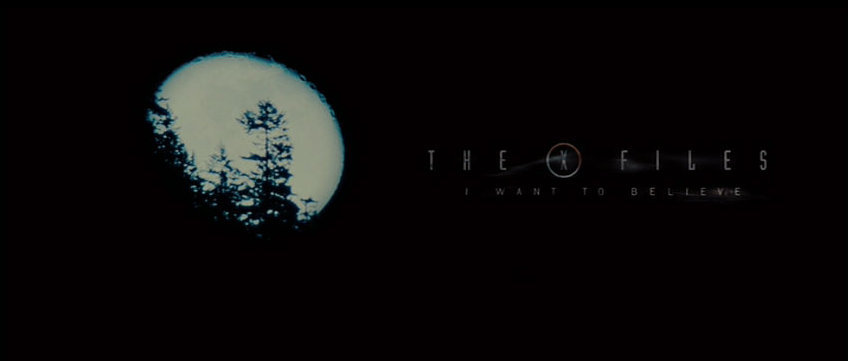
– Millennium: Pilot (Chris Carter, David Nutter, 1996)
Is inspiration from your own previous work stealing or an influence? In all cases, the beginning of I Want To Believe presents certain striking similarities with the pilot for Millennium: a search by a party of law enforcement agents in a line, led by a man who seems to have a supernatural sense or visions, through unfriendly terrain, ending in the unearthing of a gruesome find. In the case of the Millennium episode, it is night in a park crossed by a river; the leader is Frank Black, who has a gift that might or might not be supernatural to sense or see what the killer sees; the discovery is that of a man with his mouth and eyes stitched shut inside a coffin in the muddy banks of the river. In the X-Files film, it is daytime in a snowed plain; the leader is Father Joe, who might or might not have visions given to him by somebody that might or might not be God; the discovery is that of body parts of a previous victim. The similarities are all the more striking since there seem to be several aspects in story and tone that approach this film more to Millennium rather than to the X-Files: the God visions, the antagonist that could be just human or touched by pure evil, the resolution of the mystery using Bible quotes, the two protagonists being more introverted and brooding on the nature of the “darkness” out there rather than the collegial duet of investigators, and the general tone and low-key approach to the entire work.
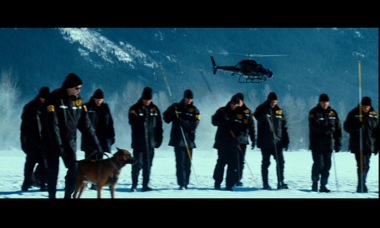 |
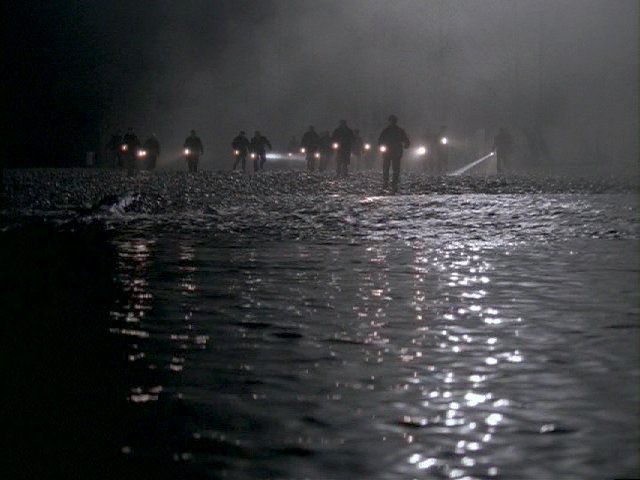 |
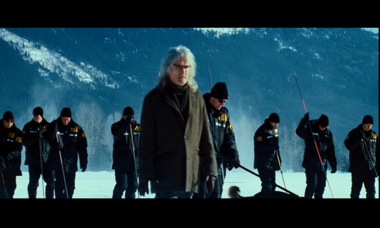 |
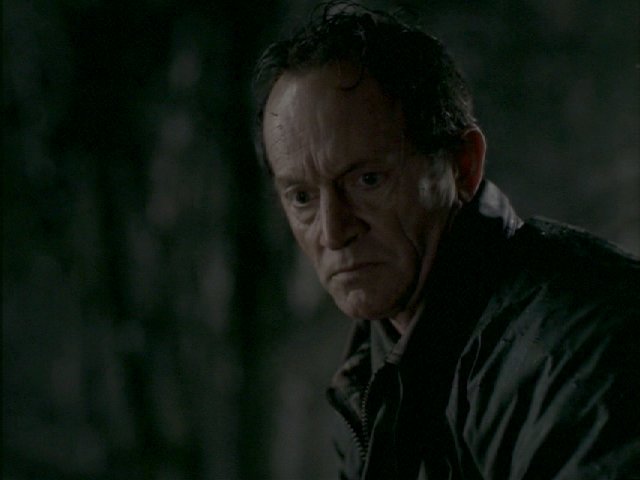 |
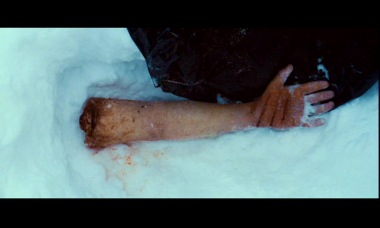 |
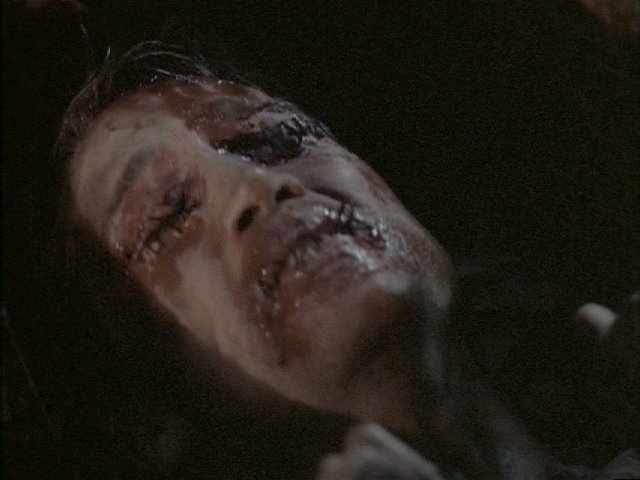 |
– Rebecca (Alfred Hitchcock, 1940)
In the film, Chris Carter, writer and director, briefly appears in a cameo, in a hospital corridor. Director cameos in their own movies are not that unusual, but the most iconic one is Alfred Hitchcock, who appeared fleetingly in most of his films and in every one of his films beginning with “Rebecca”, his first American film. In more recent times, M Night Shyamalan, also largely inspired by Hitchcock, made a staple of his films to appear in each of them, sometimes in talking roles. Chris Carter previously appeared in 2X25: Anasazi in a talking role, and in 7X18: Hollywood A.D. as a member of the theater audience.
– Experiments in the Revival of Organisms (JBS Haldane, Sergei S. Bryukhonenko, 1940)
This 20 min documentary presents Soviet experiments on resurrecting dead animals: a separate heart, to which are added tubes; separate lungs, tubed to gas feeds; an artificial machine linking heart and lungs and pumping oxygen and blood that is used to feed a severed dog head, which progressively reacts; a dog deceased ten minutes earlier connected to the apparatus, which succeeds in resurrecting it. Despite the scientific appearance of the film, it is highly likely that this is a hoax, a part of Soviet propaganda meant to show to the world the superiority of Soviet medicine. This is evident in some shots and cross-editing (that would make Eisenstein jealous), and in the way some crucial things are not shown or framed in such a way as to hide certain things, such as whether the reanimated head is indeed severed or not, whether the resurrected dog was indeed dead or not. Not to mention that 70 years later, science has not quite managed to recreate that kind of experiment (yet?). On the other hand, this documentary might be a recreation of the real experiments, thus the “staged” feel. The whole film is available at the Internet Archive.
Fake or not, Chris Carter explicitly mentioned being inspired by Soviet experiment videos that he saw on the internet for the story for I Want To Believe. The main X-File is indeed very similar: a doctor attempts a full-body transplant of a head, and the head is kept alive during the process by linking it to a pumping machine that keeps it irrigated with blood. There are even hints that the experiments were first conducted on dogs before moving on to humans (the two-headed dog).
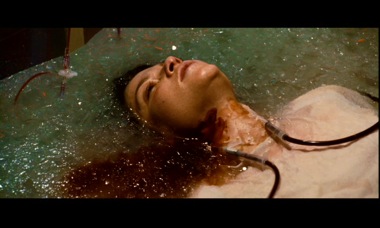 |
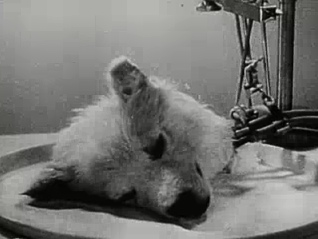 |
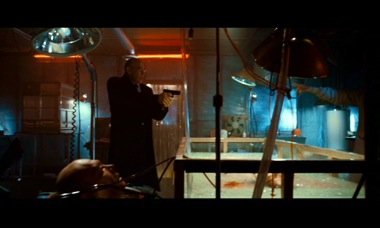 |
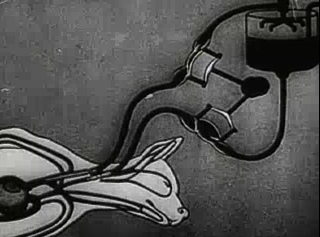 |
– The Brain That Wouldn’t Die (Joseph Green, 1962)
Apart from the above “documentary”, a possible influence can be found in this black-and-white horror movie, which shares with I Want To Believe essentially the same storyline. A scientist’s girlfriend is decapitated in a car accident; the scientist manages to keep it alive linked to machinery; he makes up a plan of kidnapping girls and using their bodies to act a full-body transplant of his girlfriend’s head on them. The scientist here is motivated first by love and is brought to do evil deeds in order to save his loved one — similarly to the X-Files film, where the couple of Tomczeszyn and Dacyshyn use the services of a Russian scientist to perform the body transplant operation due to the former’s lung cancer.
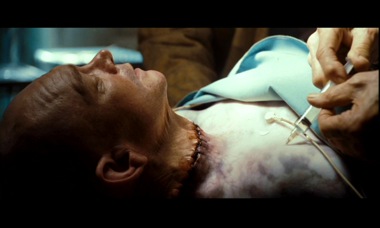 |
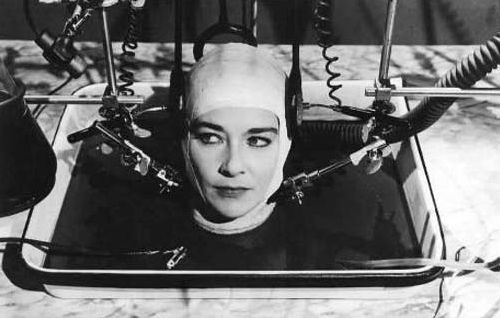 |
“Brain” also features previous failed experiments to operate transplants, in the form of a horribly mutated man. In the X-Files film, the two-headed guardian dog is a previous experiment of the scientist.
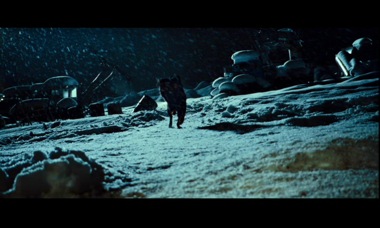 |
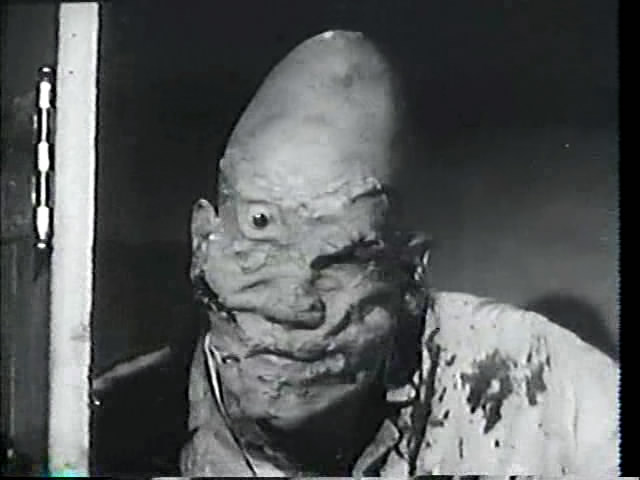 |
The Thing from Another
World is a 1951 American
black-and-white science
fiction-horror film.
Carpenter’s flim was a bad rip off remake.